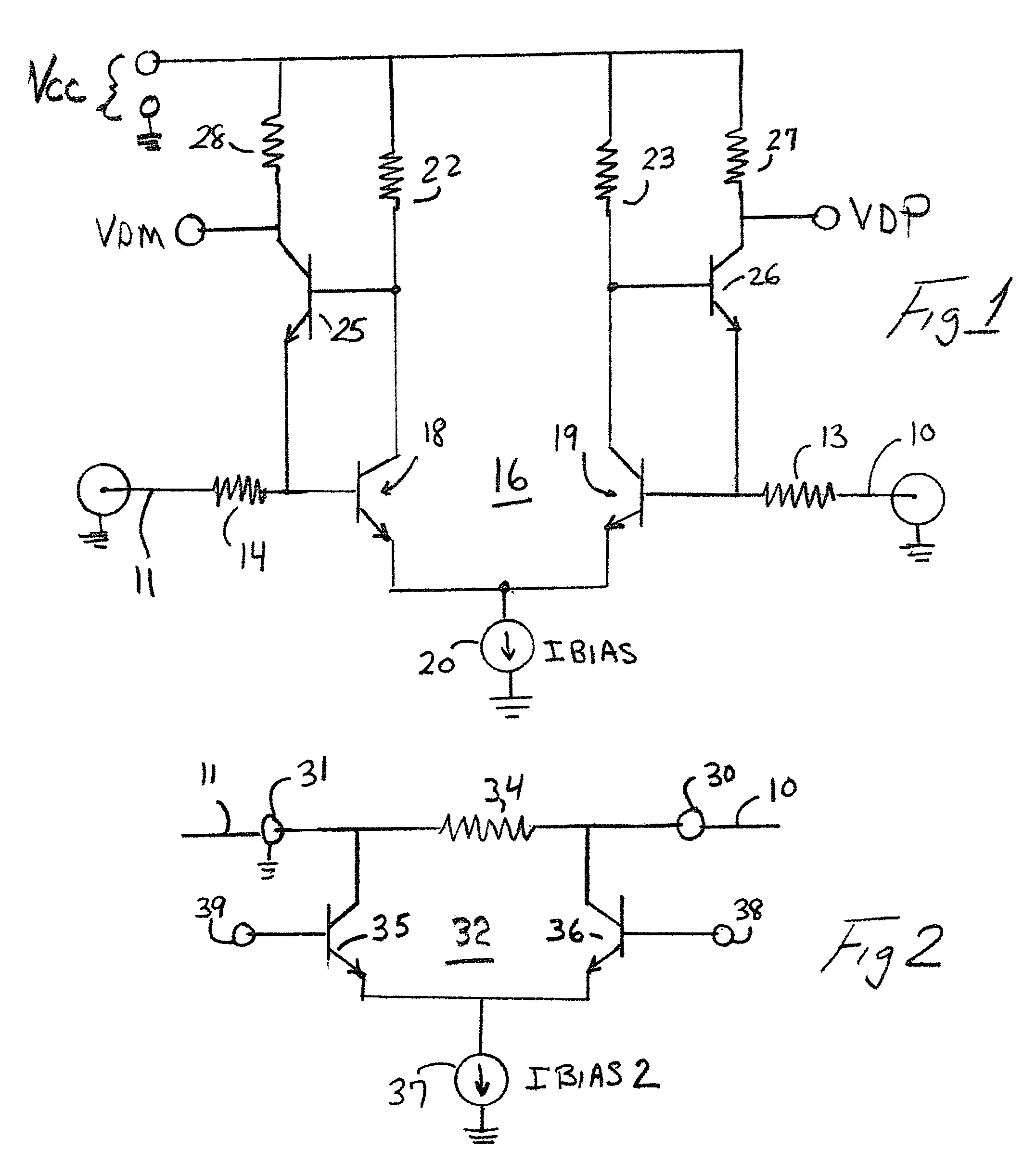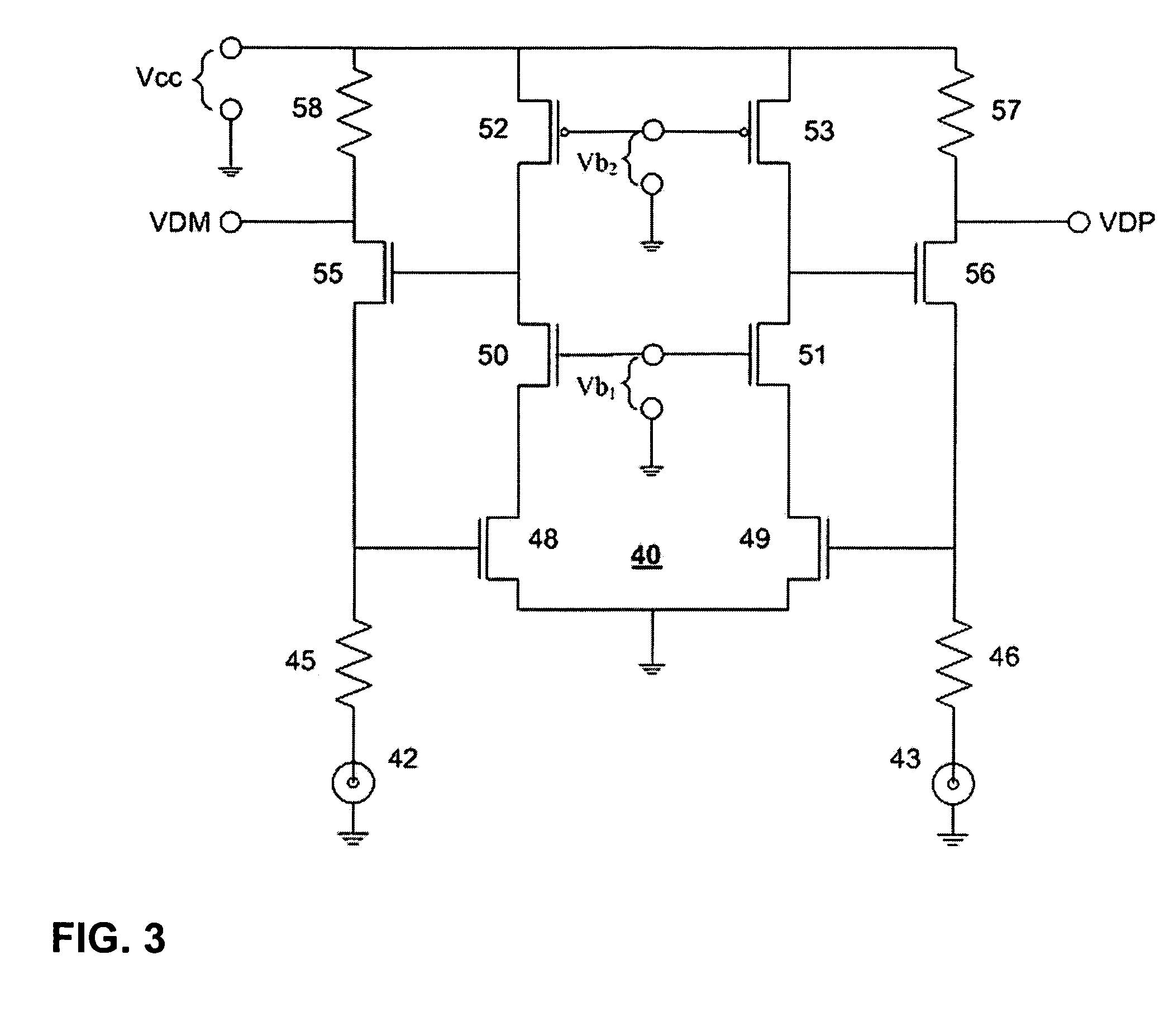Apparatus and method for transmitting and receiving high-speed differential current data between circuit devices
a technology of differential current and circuit devices, applied in the direction of baseband system details, power management, wireless communication, etc., can solve the problems of dominating the power consumption of the interface circuit and high transmit power, and achieve the effect of reducing the input impedance of the common-base amplifier emitter connection, reducing the total impedance, and increasing the bit error ra
- Summary
- Abstract
- Description
- Claims
- Application Information
AI Technical Summary
Benefits of technology
Problems solved by technology
Method used
Image
Examples
Embodiment Construction
[0021]Referring now to FIG. 1, a receiver for high-speed differential digital signals is shown. Transmission lines 10, 11 carry differential digital signals from a driver circuit to one side of terminating resistances 13, 14, respectively. Terminating resistances 13 and 14 are selected to be as close in value to the characteristic impedance of the transmission lines 10 and 11 as possible. Transmission lines 10 and 11 can be for example, wire or other conductors that have a length that acts as a transmission line at the frequencies higher than 1 gigabit per second. It should be noted that lengths of wire or other conductors of just a few inches exhibit transmission line characteristics at these high frequencies.
[0022]Each of the terminating resistances 13 and 14 are connected to the emitters of a first and second common-base amplifier circuit 26, 25, respectively. The common-base amplifier circuits comprise transistors 25 and 26, and collector resistors 28 and 27, respectively. The i...
PUM
 Login to View More
Login to View More Abstract
Description
Claims
Application Information
 Login to View More
Login to View More - R&D
- Intellectual Property
- Life Sciences
- Materials
- Tech Scout
- Unparalleled Data Quality
- Higher Quality Content
- 60% Fewer Hallucinations
Browse by: Latest US Patents, China's latest patents, Technical Efficacy Thesaurus, Application Domain, Technology Topic, Popular Technical Reports.
© 2025 PatSnap. All rights reserved.Legal|Privacy policy|Modern Slavery Act Transparency Statement|Sitemap|About US| Contact US: help@patsnap.com



